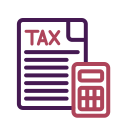Navigating the Tax Implications of Retirement in Canada
Chosen theme: Tax Implications of Retirement in Canada. Turn your hard-earned savings into a reliable, tax-smart retirement income. We’ll translate complex rules into practical steps, with stories, examples, and prompts to help you act today. Subscribe and join the conversation so your future self can thank you.



Your Retirement Income, Through a Tax Lens
By the end of the year you turn 71, your RRSP must convert to a RRIF or annuity. RRIF withdrawals are fully taxable as ordinary income, with no withholding on the minimum but possible withholding above it. Build a calendar for conversion dates and minimum factors, and ask questions in the comments if your timing feels tricky.
Your Retirement Income, Through a Tax Lens
CPP/QPP and Old Age Security are taxable sources reported on your return, yet OAS carries a recovery tax if your net income exceeds a set threshold. Guaranteed Income Supplement is not taxable, but it is income‑tested. Share how you balance these benefits, and subscribe for updates on thresholds and indexation changes.
If your net income for tax purposes exceeds the annual OAS threshold, a percentage of the excess becomes a recovery tax, typically withheld from future OAS payments. It’s based on your return’s reported income, not just cash received. Comment with questions about line items that count toward net income.


Pension income splitting: up to 50% with Form T1032
Eligible pension income—like RRIF withdrawals at age 65 or later, or defined benefit pensions—can be split with a spouse or common‑law partner. This does not include OAS and typically not CPP, which has its own sharing rules. Ask us how to model different split percentages before filing.
Pension income amount and age amount credits
The pension income amount can provide a valuable non‑refundable credit on eligible pension income, while the age amount adds relief for many seniors, phased out as income rises. Coordinate credits across spouses to avoid waste. Subscribe for a worksheet that maps credits to your expected income lines.
Real‑world win: smoothing the tax curve together
When Ken split his RRIF withdrawals with Maya, their combined tax bill fell and Maya stayed below the OAS threshold. The move also balanced future RRIF minimums. Share your household’s approach to splitting, and we’ll feature anonymized examples to help others learn.
Withdrawal Sequencing for Lower Lifetime Taxes
If you retire before taking CPP/OAS, consider drawing modest RRSP or RRIF income in lower‑income years to fill tax brackets and reduce future minimums. This can mitigate OAS clawback later. Post your target bracket plan, and we’ll reply with tips to refine it.


Withdrawal Sequencing for Lower Lifetime Taxes
Harvest gains when your income is lower, and avoid superficial loss rules when realizing losses. Track adjusted cost base carefully and consider donating appreciated securities for a double benefit. Subscribe for a free ACB checklist and a year‑end tax‑loss harvesting reminder.
Withholding, Installments, and Filing Details
RRSP withdrawals have withholding at source, while RRIF minimums generally do not. Your final tax is based on your total annual income and credits. If you consistently owe more than a threshold, CRA may require installments. Comment if installment notices confuse you—we’ll help decode them.
